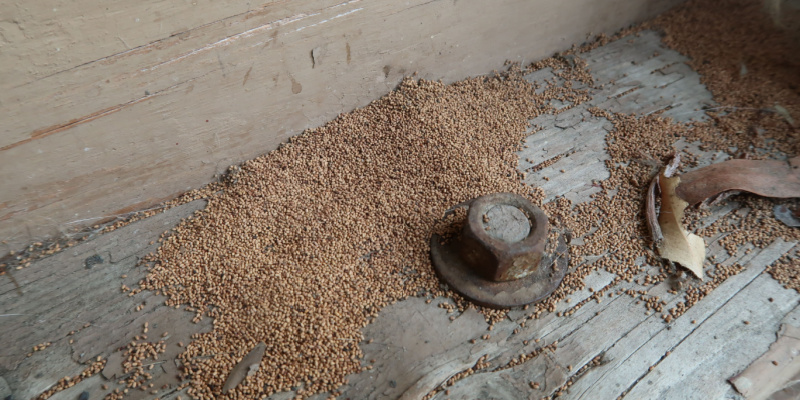Termites are often called “silent destroyers” because they can be hard to detect and may cause extensive damage before homeowners realize there’s a problem. In regions like Southern California, where termite activity is prevalent, it’s crucial for homeowners to know how to identify signs of an infestation. The good news is that you can detect a termite problem in your home if you learn a few of the signs that indicate an infestation.
Understanding Termites and Their Behavior
Termites are social insects living in colonies. In the U.S., the most common types are subterranean and drywood termites. Subterranean termites build mud tubes for moisture while traveling between their colony and food source, whereas drywood termites live directly in the wood they consume.
Key Indicators of a Termite Infestation
- Mud Tubes: Subterranean termites create mud tubes on walls, foundations, and other structures. These pencil-sized tubes are a highway for termites and help protect them from predators, and maintain a humid environment.
- Wood Damage: Termites consume wood from the inside out, leaving a thin veneer of timber or paint. If you tap an area of wood in your home and it sounds hollow, it may be a sign of termites.
- Swarmers and Discarded Wings: Reproductive termites, or swarmers, leave the nest to start new colonies. After swarming, they shed their wings. Finding discarded wings near windows, doors, or other home access points can be a sign of an infestation.
- Frass: Drywood termites produce wood-colored droppings called frass as they eat through infested wood. Finding these tiny pellet-like droppings can be an indicator of a drywood termite infestation.
Steps to Take If You Suspect Termites
- Inspect Your Home Regularly: Regularly check for signs of termite activity, especially if you live in an area prone to termites.
- Consult a Professional: If you suspect a termite infestation, it’s crucial to get a professional inspection. Termite control requires specialized skills, knowledge, and tools that most homeowners don’t possess.
- Consider Professional Treatment Options: If termites are found, a professional can provide effective treatment options. This may include soil treatment, bait systems, or direct wood treatments, depending on the type and severity of the infestation.
Preventative Measures to Avoid Termite Infestations
- Reduce Moisture: Fix leaks, ensure proper drainage, and keep gutters clean to minimize moisture, which attracts termites.
- Eliminate Wood Contact with the Ground: Keep wood, including firewood and lumber, away from the foundation of your home.
- Regular Inspections: Schedule annual inspections with a termite control professional, especially if your area is known for termite problems.
Early Detection Is Key
Detecting a termite infestation early can save you significant time, money, and stress. By knowing what signs to look for and taking preventative steps, you can protect your home from these destructive pests.
Early detection is a good thing – but prevention is even better. A knowledgeable termite control expert can help you in both eradication and prevention efforts. If you do not see any signs of an infestation, that is amazing. You can keep it that way with a few proactive prevention steps. For more detailed information and professional assistance, visit Bug Baron’s comprehensive website to learn more.



